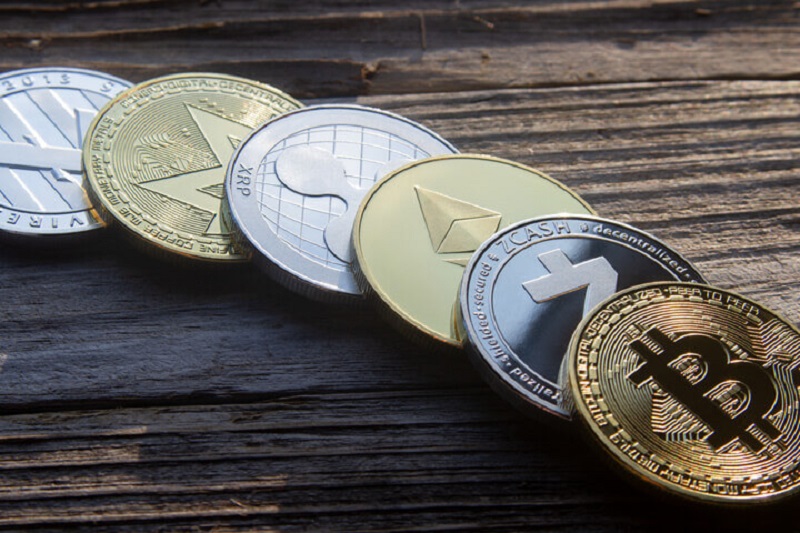
What Are Altcoins? A Beginner’s Guide to Crypto Beyond Bitcoin
What is an altcoin?
An altcoin—short for “alternative coin”—is any cryptocurrency other than Bitcoin (BTC). Altcoins range from general-purpose networks that host apps to niche tokens that do one thing inside a specific protocol. Some altcoins are foundational (they secure entire blockchains), while others are utility chips inside a single application.
Why altcoins exist
-
Different design choices: Faster block times, lower fees, smart contracts, privacy features, or energy profiles.
-
New use cases: DeFi lending/borrowing, stable-value payments, gaming, NFTs, identity, and governance.
-
Experimentation: Open-source communities iterate quickly; altcoins test new economic and technical ideas.
Ecosystem incentives: Tokens can reward early users, validators, and developers, bootstrapping network effects.
Types of altcoins (with examples)
Note: Examples are illustrative, not endorsements.
|
Category |
What it does |
Typical examples |
|
Layer-1 smart-contract platforms |
Base blockchains that run apps and smart contracts. |
Ethereum (ETH), Solana (SOL), Avalanche (AVAX), Cardano (ADA) |
|
Layer-2 / scaling tokens |
Help scale a base chain with faster/cheaper transactions. |
Polygon (MATIC), Arbitrum (ARB), Optimism (OP) |
|
Stablecoins |
Tokens pegged to assets (often USD) for payments and trading. |
USDT, USDC, DAI |
|
DeFi tokens |
Power decentralized exchanges, lenders, derivatives, yield. |
Uniswap (UNI), Aave (AAVE), Maker (MKR), Curve (CRV) |
|
Governance/utility tokens |
Let holders vote or pay fees inside a protocol/app. |
Many DAO tokens (various) |
|
Privacy-focused coins |
Emphasize transaction confidentiality. |
Monero (XMR), Zcash (ZEC) |
|
Interoperability tokens |
Connect multiple blockchains and move assets across them. |
Polkadot (DOT), Cosmos (ATOM) |
|
Memecoins & culture coins |
Community-driven tokens often built around memes. |
DOGE, SHIB, and many others (high risk) |
|
Wrapped assets & tokenized RWAs |
On-chain versions of off-chain or cross-chain assets. |
WBTC (wrapped BTC), tokenized T-bills (various) |
Altcoins vs. Bitcoin: key differences
|
Feature |
Bitcoin |
Many Altcoins |
|
Primary goal |
Sound, scarce digital money/store of value |
Platforms, apps, payments, governance, experimentation |
|
Supply policy |
Fixed cap (21M) |
Varies: capped, inflationary, algorithmic, or controlled |
|
Security model |
Highly decentralized, longest-running network |
Varies widely; some highly decentralized, others not |
|
Change cadence |
Conservative upgrades |
Faster iteration; more features, more risk |
|
Volatility |
High |
Often higher than BTC |
How to evaluate an altcoin (practical checklist)
1) Use case & market fit
-
What problem does it solve? Is there real demand beyond speculation?
-
Who are the users today? Is usage growing?
2) Tokenomics
-
Supply: hard cap or ongoing issuance?
-
Emissions & unlocks: Are large allocations vesting soon?
-
Utility: Why should the token exist? (fees, staking, governance, collateral)
3) Team, community, and governance
-
Credible builders? Transparent communication?
-
Open-source code? Active developer community?
-
Governance: Is decision-making decentralized or dominated by insiders?
4) Technology & security
-
Is the code audited? Any past exploits?
-
Validator/miner set: How decentralized?
-
Liveness history: downtime, chain halts, or upgrades that broke things?
5) Liquidity & market structure
-
Where is it listed (CEX/DEX)?
-
Slippage on typical trade sizes; depth of order books; on-chain liquidity pools.
6) Ecosystem momentum
-
Number/quality of apps, integrations, partners.
-
Developer activity: commits, contributors, hackathons, grants.
7) Regulatory and legal considerations
-
Jurisdictional risk, securities concerns, KYC/AML implications.
Pro tip: Create a one-page scorecard with these headings and assign a 1–5 score for each. It keeps emotions in check.
Risks you should understand
-
Extreme volatility: Altcoins can drop 50–90% quickly.
-
Smart-contract risk: Bugs, exploits, oracle failures.
-
Counterparty risk: Exchanges, lenders, bridges can fail.
-
Liquidity risk: Thin markets mean big slippage; exits can be hard.
-
Centralization risk: Admin keys, upgrade powers, token concentration.
-
Regulatory risk: Laws evolve; listings can change.
-
Hype cycles & rugs: Anonymous teams, opaque tokenomics—be skeptical.
Rule of thumb: Position sizing beats prediction. Assume you can be wrong.
Common mistakes to avoid
-
Chasing green candles: Buying because it’s up, not because it’s good.
-
Ignoring unlock schedules: Large cliffs can crush price.
-
No thesis: “Number go up” isn’t a strategy. Write a 3-sentence thesis per coin.
-
Poor opsec: Reusing passwords, no hardware wallet, signing unknown transactions.
-
Confusing coins with chains: Some tokens are just app credits, not base networks.
-
Falling for fake contract addresses: Always verify from official docs.
FAQs
Are NFTs altcoins?
They’re tokens, but typically non-fungible and represent unique items. In investing discussions, people usually separate NFTs from “altcoins.”
Which altcoin is “best”?
There’s no universal best—only fit for purpose. Define your goal (payments, yield, ecosystem exposure) and evaluate accordingly.
Do altcoins follow Bitcoin?
Often, yes—BTC liquidity and macro conditions tend to set the tone. Altcoins can outperform in risk-on windows and underperform in risk-off periods.
Stablecoins sound safe—are they?
They reduce price volatility but introduce issuer, collateral, and peg risks. Research how the peg is maintained and what backs it.
How much should I allocate to altcoins?
It depends on risk tolerance, time horizon, and conviction. Many beginners cap high-risk allocations to a small slice of their investable assets.
